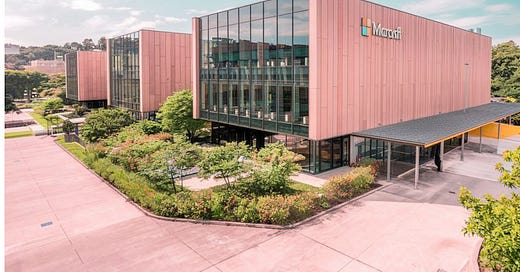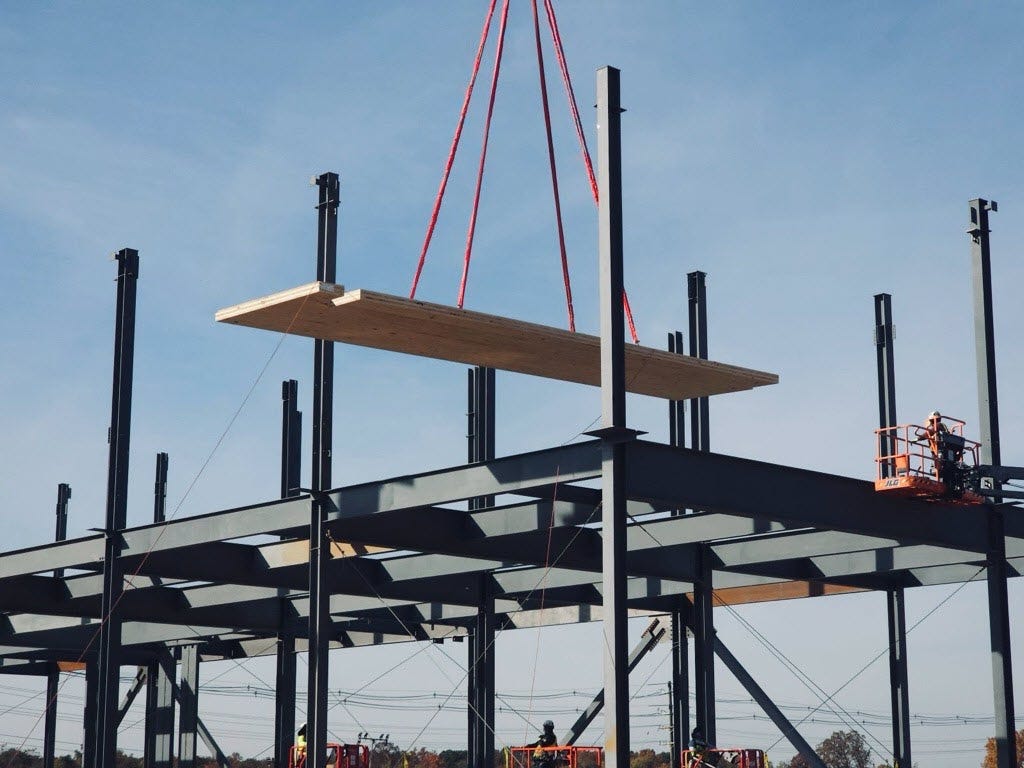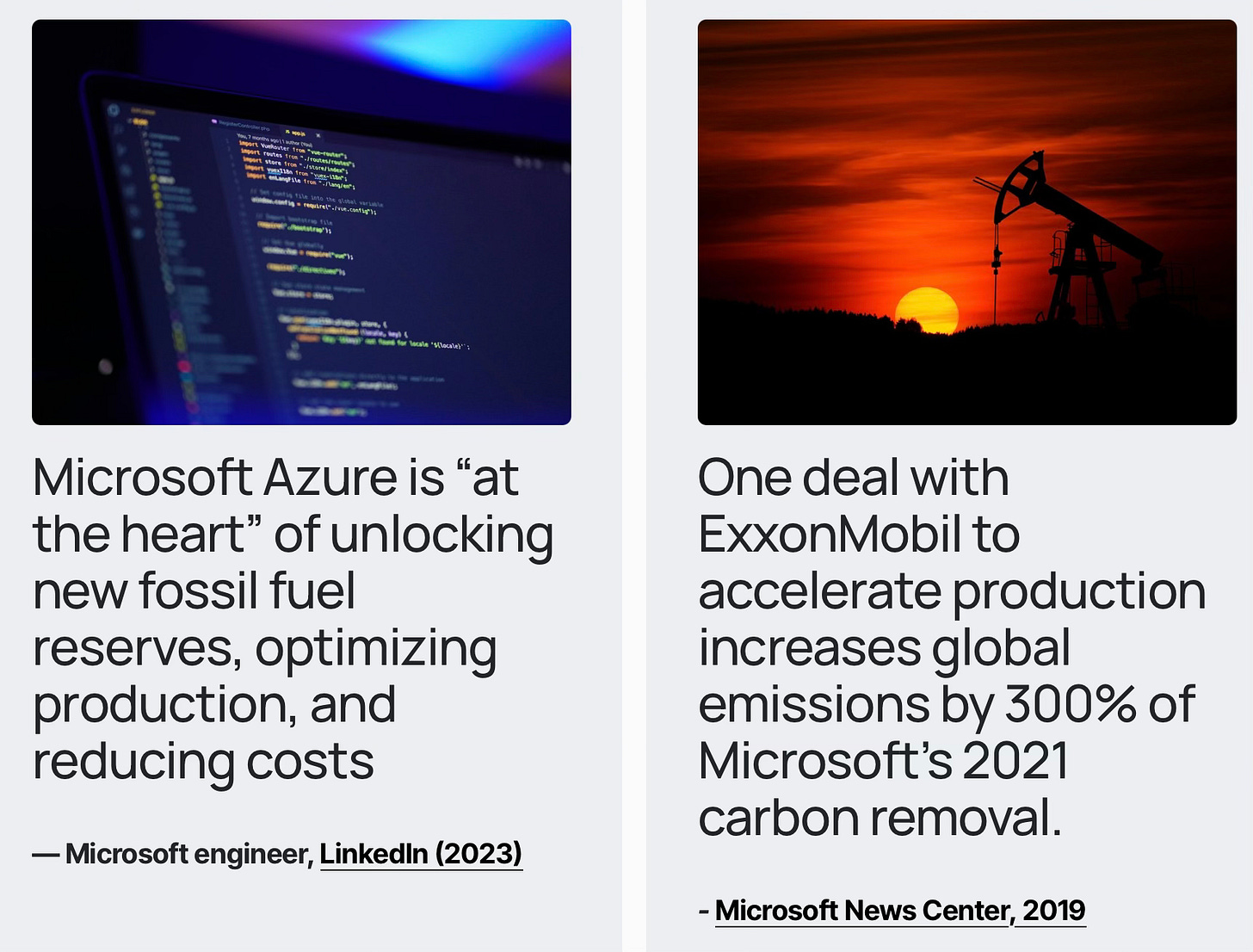Microsoft "greenwraps" AI data centres with mass timber
The carbon emissions saved by using CLT floors are homeopathically small compared to the upfront, operating and enabled emissions.
Microsoft is building data centres with floors made of cross-laminated timber (CLT) “in a bid to slash the use of steel and concrete, which are among the most significant sources of carbon emissions." According to Microsoft’s sustainability pages:
“A wood datacenter may sound strangely old-fashioned, if not improbable. But Microsoft engineers have developed a hybrid approach using cross-laminated timber, or CLT, a fire-resistant prefabricated wood material that will enable the company to reduce the use of steel and concrete. The hybrid mass timber, steel and concrete construction model is estimated to significantly reduce the embodied carbon footprint of two new datacenters by 35 percent compared to conventional steel construction, and 65 percent compared to typical precast concrete.”
I got in trouble on Linkedin when I complained that this was “greenwrapping,” a term I coined a few years ago when architects were putting green roofs and walls on buildings with ridiculous energy-sucking uses such as airport terminals and data centres.
In the case of a data center like this, the average energy use is about 1000 kWh per square metre (93 kWh per square foot). The life cycle carbon emissions saved by going with timber might be little more than a rounding error.
Futhermore, the savings of carbon in the building are overwhemed by the vast expansion of the data centres. Microsoft admits this in their 2024 environmental sustainability report:
“In 2023, we saw our Scope 1 and 2 emissions decrease by 6.3% from our 2020 baseline. This area remains on track to meet our goals. But our indirect emissions (Scope 3) increased by 30.9%. In aggregate, across all Scopes 1–3, Microsoft’s emissions are up 29.1% from the 2020 baseline. The rise in our Scope 3 emissions primarily comes from the construction of more datacenters and the associated embodied carbon in building materials, as well as hardware components such as semiconductors, servers, and racks.”
Microsoft is investing in low-carbon building technologies, from steel made with hydrogen to zero-carbon cement. In 2023 they bought almost 20 gigawatts of renewable energy. But it is all overwhelmed by the massive growth of their data centres- a little CLT isn’t going to make much difference. And then there are the uses of all that Artificial Intelligence.
The mad growth of “Enabled Emissions.”
Oil companies use artificial intelligence and cloud computing for hydraulic fracturing (fracking) and deepwater drilling. “These technologies are now “game changers”, cutting costs and boosting yields by up to 15%, resulting in massive “enabled emissions” — additional emissions from increased fossil fuel production enabled by technology.”
Holly Alpine, a former Microsoft employee who coined the term “enabled emissions” and quit the firm to set up a enabledemissions.com to advocate and educate about them, writes in Fortune:
“Analyst reports suggest that advanced technologies—such as AI or machine learning (ML)—have the potential to increase fossil fuel yield by 15%, contributing to a resurgence of oil and potentially delaying the global transition to renewable energy. The real-world impacts are staggering: A single such deal between Microsoft and ExxonMobil could generate emissions that exceed Microsoft’s 2020 annual carbon removal commitments by over 600%. I saw dozens of such deals during the time I was employed at Microsoft.”
Brian Merchant writes on his website, Blood in the Machine, AI companies are helping to accelerate the climate crisis in at least 3 major ways:
Selling tools to help oil companies AI tools to accelerate fossil fuel extraction.
Running data centers that require ~10x the amount of electricity as Google
Giving fossil fuel companies a reason—or an excuse—to build more power plants.
In the end, building data centres out of CLT is making a negligible difference in Microsoft’s carbon emissions; it is overwhelmed by the upfront emissions that come from making the equipment inside, the operating emissions from running it, and the enabled emissions from the customers. As Brian Merchant concludes,
“As long as the AI bubble continues to inflate, it seems it risks further revitalizing the fossil fuels industry right along with it. It’s darkly ironic that AI is being pitched as essential to the future, when it is breathing life into some of the most pollutive technologies of our past.”







Thanks for this article, and what a great term "greenwrapping" is.
"Greenwrapping," captures what Microsoft is doing perfectly.